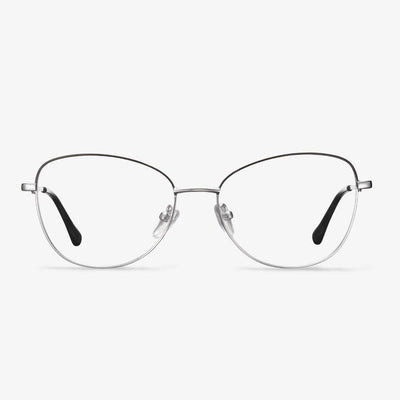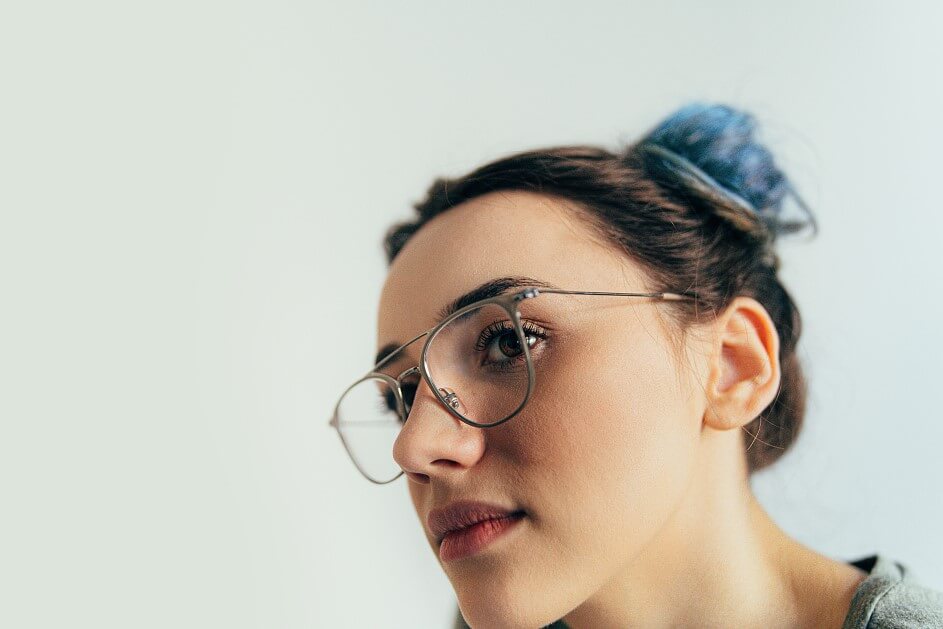Advantages of progressive lenses
1. The appearance of the lens is like a single vision lens, and the dividing line of the degree change cannot be seen. Not only is the appearance beautiful, but more importantly, it protects the age privacy of the wearer. There is no need to worry about leaking the age secret due to wearing glasses.(https://www.koalaeye.com/collections/progressive-glasses)
2. Since the change of lens power is gradual, there will be no image jump. It is comfortable to wear and easy to adapt.
3. Because the degree is gradual, the replacement of the adjustment effect is gradually increased according to the shortening of the short distance. There is no adjustment fluctuation, and it is not easy to cause visual fatigue.
4. Clear vision can be obtained at all distances in the visual range. A pair of glasses meet the use of long-distance, near use, and various distances in between. It is especially good for teachers, doctors, music workers, and computer operators because these people not only need to see far and near objects clearly, but most of the time they also need to be able to see objects at intermediate distances such as blackboards, piano scores, and computer screens. This is not possible with lenses other than progressive lenses.
5. At present, both internal and external ophthalmologists agree that young people should wear low-degree convex lenses when reading and writing to reduce near-use adjustment, thereby alleviating or preventing the occurrence and development of myopia. This gives the progressive multifocal lens a new meaning and mission. Physiology found that excessive use of the eyeball adjustment function can form 'accommodative spasm' or pseudo myopia. Continued development can produce longitudinal eye axis elongation and induce 'true myopia' or axial myopia. The external luminosity of the progressive lens can be artificially added to the progressive luminosity. The upper is used for looking far, and the below is used for looking near, which makes the eyeball relax and over-adjust. The ever-changing luminosity of the lens replaces the 'accommodative power' that should have been activated, blocking the vicious circle of adjusting the eye axis elongation, making the eye not easy to fatigue, and slowing the development of myopia.
Eyeglass direct
Eyeglass direct makes high-quality prescription glasses at the lowest possible price. Twenty years of experience gives you the know-how to deliver services at the lowest cost. All glasses are made with high-quality frames and high-quality lenses, using the most progressive, computerized optical processing equipment. That helps lower labor costs, passing on savings to consumers.The flexible titanium eyewear range at Eyeglass direct gives you the best quality eyewear at an affordable price.
Find the right size
The right glasses should sit comfortably on the bridge of the nose, not pressed against the forehead or cheeks. But they don't stay at the tip of the nose for so long that they slip while squinting or wrinkling your nose. The fit of the nose determines the distance between the glasses and the face. A proper fit should allow the lens to be between 14 and 24 millimeters away from the eyes. When you want to find glasses that fit, don't clip, don't slip, and don't lead to discomfort, you have to find out the size you need.
What Are Varifocal Glasses?
Varifocal glasses, also known as varifocals, varifocal lenses, or progressive lenses, have a gradual change in strength from the top of the lens to the bottom with multiple focal points in between. Unlike bifocals, varifocals glasses have no specific area of lens strength, but progressive lens zones.
As mentioned above, varifocal glasses have three different prescriptions in one pair of glasses, allowing you to correct near and far vision. So, they bring you great convenience since you don’t need to change the glasses frequently.
However, there are also some common problems with varifocal glasses and we will show you the disadvantages of varifocal glasses.
So, in the following section, we will show you the disadvantages of varifocal glasses.
How do I choose the right glasses frames?
Choosing a frame is largely a matter of personal preference. However, in addition to the style, you need to check the comfort level to see if there are problems like ear clips, nose compression, skin irritation, and so on. Please note that if you are highly short-sighted, try full-frame glasses, because full-frame glasses can hold heavier lenses more reliably. Below are a few easy ways to determine which frames would best flatter your face and show off your style and personality.
Step 1: Identify your face shape. Identifying your face shape is a good place to start when it comes to learning how to select frames which will suit your face shape.
Step 2: Choose colors that complement your skin tone. If you have a cool-colored skin tone, opt for shades of black, gray, and blue. If your skin tone is warm, you would benefit from warm colors, such as tan, pink, and red. As always, when you learn how to select frames, it is easy to know which colors suit your skin.
Step 3: Consider your way of living. When considering how to select frames for your lifestyle, one of the most important things is to make sure the frames fit at the bridge of your nose. This will allow your glasses to stay put better. If you exercise often, comfortable, sturdy frames are a must. If you want to look the part at an important business meeting, you can choose stylish frames with a variety of angles. If you need sunglasses for the beach, go for soft, colorful frames that will complement your relaxed vibe.
Step 4: Flaunt your personality.Frames are the perfect way to show off who you are and your personality. In the process of learning how to select your frames, you cannot forget to choose those that show off your personal style. You can find the perfect shapes, colors, or patterns, but those qualities mean very little if you aren’t comfortable.
Why are titanium glasses so expensive?
Comfortable to Wear. Pure titanium frame can get rid of the stiff, heavy, easy-to-deform shortcomings of the common glasses frame, closely with the color plating process, indicating youthful vitality and a three-dimensional sense. They have no magnetic reaction, so they are not allergic to skin. It has the benefits of corrosion resistance, allergy resistance, and fatigue resistance. Ergonomic, titanium material is non-toxic to the human body. They have no radiation. They can be changed in the width according to the size of your face, and maintain the situation. Compared with other metal materials, it is not easy to deform and fade, and has strong stability, highlighting the noble taste and elegant temperament.
Advantages of progressive lenses
1. The appearance of the lens is like a single vision lens, and the dividing line of the degree change cannot be seen. Not only is the appearance beautiful, but more importantly, it protects the age privacy of the wearer. There is no need to worry about leaking the age secret due to wearing glasses.(https://www.koalaeye.com/collections/progressive-glasses)
2. Since the change of lens power is gradual, there will be no image jump. It is comfortable to wear and easy to adapt.
3. Because the degree is gradual, the replacement of the adjustment effect is gradually increased according to the shortening of the short distance. There is no adjustment fluctuation, and it is not easy to cause visual fatigue.
4. Clear vision can be obtained at all distances in the visual range. A pair of glasses meet the use of long-distance, near use, and various distances in between. It is especially good for teachers, doctors, music workers, and computer operators because these people not only need to see far and near objects clearly, but most of the time they also need to be able to see objects at intermediate distances such as blackboards, piano scores, and computer screens. This is not possible with lenses other than progressive lenses.
5. At present, both internal and external ophthalmologists agree that young people should wear low-degree convex lenses when reading and writing to reduce near-use adjustment, thereby alleviating or preventing the occurrence and development of myopia. This gives the progressive multifocal lens a new meaning and mission. Physiology found that excessive use of the eyeball adjustment function can form 'accommodative spasm' or pseudo myopia. Continued development can produce longitudinal eye axis elongation and induce 'true myopia' or axial myopia. The external luminosity of the progressive lens can be artificially added to the progressive luminosity. The upper is used for looking far, and the below is used for looking near, which makes the eyeball relax and over-adjust. The ever-changing luminosity of the lens replaces the 'accommodative power' that should have been activated, blocking the vicious circle of adjusting the eye axis elongation, making the eye not easy to fatigue, and slowing the development of myopia.













































